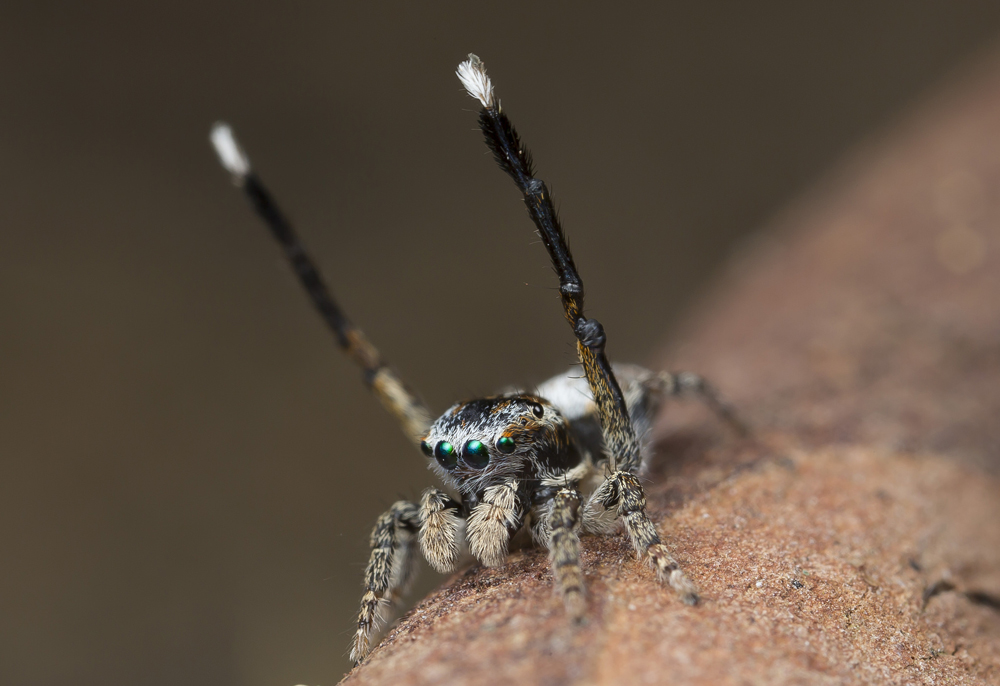In Photos: 7 New Species of Peacock Spider
Maratus tessellatus

Scientist David Knowles discovered M. tesselatus years ago near Bunbury in Western Australia. He recently helped biologist Jürgen Otto locate the species, which he named and described with David Hill.
Maratus tessellatus

M. tesselatus is a peacock spider species that does not elevate its abdomen during courtship displays, relying instead on fancy footwork. The legs move so fast that they appear as blurs in video clips captured at 25 frames-per- second video. Otto described M. tessellatus as, "Probably the fastest leg mover I have encountered so far."
Maratus tessellatus

A male M. tessellatus (left) and a female (right). This species can be found on old sand dunes close to the shore, amid small plants and debris. It varies somewhat in pattern but common to all individuals is a tessellated or blotchy look, which prompted the scientists to name it "tessellatus."
Read the full story about the new peacock spider species.]
Sign up for the Live Science daily newsletter now
Get the world’s most fascinating discoveries delivered straight to your inbox.

Mindy Weisberger is an editor at Scholastic and a former Live Science channel editor and senior writer. She has reported on general science, covering climate change, paleontology, biology and space. Mindy studied film at Columbia University; prior to Live Science she produced, wrote and directed media for the American Museum of Natural History in New York City. Her videos about dinosaurs, astrophysics, biodiversity and evolution appear in museums and science centers worldwide, earning awards such as the CINE Golden Eagle and the Communicator Award of Excellence. Her writing has also appeared in Scientific American, The Washington Post and How It Works Magazine. Her book "Rise of the Zombie Bugs: The Surprising Science of Parasitic Mind Control" will be published in spring 2025 by Johns Hopkins University Press.









